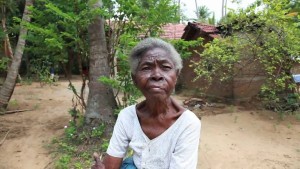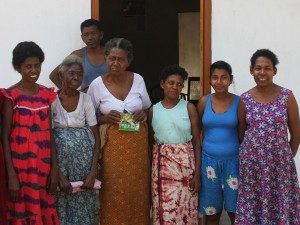 Sri Lanka (formerly British Ceylon) is an Island nation which witnessed three decades of relentless war which separated the nation on ethnic lines as a result of ethnic violence between the Sinhalese and Tamils, the nation’s two major ethnic communities.
Sri Lanka (formerly British Ceylon) is an Island nation which witnessed three decades of relentless war which separated the nation on ethnic lines as a result of ethnic violence between the Sinhalese and Tamils, the nation’s two major ethnic communities.
However, since 2009 the nation has gradually recovered from the turbulence of history and at present it is one of the finest tourist destinations in the Indian sub-continent. Sri Lanka isn’t home to just Sinhalese and Tamils, as there are several other minorities who have lived for over many centuries in friendly brotherhood, and have helped weave the nation’s multicultural fabric.
The most distinct minority in Sri Lanka is undoubtedly the Kaffirs or those who claim African descent whose ancestors reached the Lankan Shores during the Portuguese Colonisation in Ceylon. The invaluable Lankan spice, cinnamon brought the Portuguese to Ceylon and they were successful in gaining control over the trade monopoly by the turn of 16th century and later conquered the maritime provinces of the Island. The ‘Kaffir’ is a derogatory term used to infer the blacks or those who claim African lineage derived from the Arabic word ‘Kafir’ meaning ‘unbelievers’ or those who believe and follow pagan practices. Those who claim African descent in Sri Lanka identify themselves as ‘Kaffirs’ or Kaffringa derived from Portuguese and the local Sinhalese refer them as ‘Kaapiri minissu’ meaning Black people. They were first brought to Ceylon as mercenaries and laborers by the Portuguese in 1600’s and legend goes to say that they were from South East Africa and many claim that their ancestors hailed from Portuguese Mozambique from the famous ‘Bantu’ tribe. There aren’t sufficient written records which helps corroborate their claims yet the oral sources / history based on stories passed down for over generations is considered the main source of information which has helped document the glorious past of this community.
Oral history helps affirm that the Kaffirs helped build the Portuguese regiments in Ceylon and the Portuguese Era saw intermittent arrivals of Kaffirs from East Africa to reinforce the weakening cantonments in Ceylon as the local Kings massacred large number of Colonial soldiers and proved successful in many battles fought with Portuguese. Many local historians are of the opinion that the natural immunity or genetic resistance of the Africans against Malaria was the reason why the Portuguese decided to employ them as mercenaries in the mountainous terrains of Ceylon which is a tropical island prone to mosquito borne diseases. The Kaffirs did not bring their womenfolk so the intermarriages with local Sinhalese and Tamils helped form the Kaffir community in Sri Lanka. The Dutch having overthrown the Portuguese took control over Ceylon in the late 16th century and decided to employ the Kaffirs as soldiers in their military regiments and some were employed as domestic servants in Dutch households in Ceylon. The Dutch Era is considered as a period of catastrophe in the history of this shrinking minority as the Hollanders preferred the installation of robust and fiercely loyal Malay soldiers from the Spice Islands of Indonesia and this eventually transformed the Kaffirs as local servants. The Colombo Fort and many other Dutch Colonial Structures that adorn the streets of Colombo were built by the Kaffirs and the Dutch reports in Ceylon helps testify that the ill fated Kaffirs were put to work as transporters, camp assistants, and military slaves.
 The report presented by Dutch Governor Van Goyans speaks of the significant Kaffir population in Sri Lanka which amounted to some staggering 4,000 at that time. The Kaffirs later rose against the Dutch, assassinated several officials and the outraged Dutch detained the Kaffirs on an Island in Colombo known as ‘Kaffir Weldt’ which was later known as ‘Slave Island’ during the British Era. The Kaffirs couldn’t escape from the clutches of the Dutch as they were surrounded by the deadly waters, home to the Lankan crocodiles. During the day, these Dutch slaves were put to work as domestic slaves in Dutch households located in the Colombo Fort and some were sent to work on Cinnamon plantations. Those who were successful slipped inland and took refuge in ‘Mahanuwara’ or Kandy, the Kingdom of Sri Lanka’s Nayakkar Kings/ Rajas. The local Rajas having understood the Kaffir’s plight employed them as soldiers in the Kandyan Sinhala Military regiments which were known as ‘Padikara Peruwa’ meaning paid levies. The ‘Padikara Peruwa’ was later strengthened with Malay Royals who were exiled to Ceylon by the Dutch who conquered the Indonesian archipelago which was then the ‘Dutch East Indies’. When the British took control over Ceylon, they too employed Kaffirs as soldiers and Kaffir Bonkoos, recipient of King’s Colours in 1802 was a soldier in His Majesty’s Regiment born to Malay father and a Kaffir mother. In 1817, British brought over Portuguese slaves from East Africa to work on plantations as labourers. Alas, the cruel fate continues to this day as the Kaffir men work as labourers while the women work as cleaners and domestic maids.
The report presented by Dutch Governor Van Goyans speaks of the significant Kaffir population in Sri Lanka which amounted to some staggering 4,000 at that time. The Kaffirs later rose against the Dutch, assassinated several officials and the outraged Dutch detained the Kaffirs on an Island in Colombo known as ‘Kaffir Weldt’ which was later known as ‘Slave Island’ during the British Era. The Kaffirs couldn’t escape from the clutches of the Dutch as they were surrounded by the deadly waters, home to the Lankan crocodiles. During the day, these Dutch slaves were put to work as domestic slaves in Dutch households located in the Colombo Fort and some were sent to work on Cinnamon plantations. Those who were successful slipped inland and took refuge in ‘Mahanuwara’ or Kandy, the Kingdom of Sri Lanka’s Nayakkar Kings/ Rajas. The local Rajas having understood the Kaffir’s plight employed them as soldiers in the Kandyan Sinhala Military regiments which were known as ‘Padikara Peruwa’ meaning paid levies. The ‘Padikara Peruwa’ was later strengthened with Malay Royals who were exiled to Ceylon by the Dutch who conquered the Indonesian archipelago which was then the ‘Dutch East Indies’. When the British took control over Ceylon, they too employed Kaffirs as soldiers and Kaffir Bonkoos, recipient of King’s Colours in 1802 was a soldier in His Majesty’s Regiment born to Malay father and a Kaffir mother. In 1817, British brought over Portuguese slaves from East Africa to work on plantations as labourers. Alas, the cruel fate continues to this day as the Kaffir men work as labourers while the women work as cleaners and domestic maids.
The dawn of Independence in 1948, made the Colonial masters leave the Island and later the Kaffirs became an unnoticed community who faced the threat of endangerment and were treated like exotic animals in Lankan society and were regarded as a non-native community residing in Sri Lanka. The Kaffir community is the only Sri Lankan minority with African roots so even to this day one could recognize a Lankan Kaffir from their much darker complexion, tightly curled hair with a different texture unlike the Asians, and from their non Asian physiognomy with some striking features such as broad face with thick lips. Moreover, the Sri Lankan Kaffir women clad in ‘Ja hatte’ (Javanese blouse) and wrap the sarong tightly around their waists while the men are often spotted in either the Batik or checkered sarong which were introduced to the Island by the Sri Lankan Malays.
The generations gone by, spoke a Portuguese Creole, and practiced unique traditions, culture and were known for their tribal beliefs. The Portuguese Creole which they spoke is now extinct and there are only few words that are used in Kaffir households. Though Portuguese dialect has lost its place as the mother tongue amongst Kaffirs it has survived to this day in the form of Music. The Kaffirs are credited to have introduced Baila, a unique genre of music and the term ‘Baila/ Bayila’ is derived from the Portuguese word ‘bailar’ meaning ‘to dance’. The Kaffirs identify their music either as ‘Manja’ or ‘Kaffiringa’ and for over many centuries they have used their traditional yet simple musical instruments such as ‘Rabana’ or drum, yak bera and Coconut shells when performing ‘Bayila’. The beating of drums expresses the mood of the Kaffir people and the most widely used musical instrument in ‘Manja’ is the human voice.
Moreover, they are known for their Baila dance and its noteworthy that during festivities the Kaffir ladies clad in their colourful Portuguese era gowns would dance with crooked knees, stamping their feet, twisting their waists and hips, and shuffling their moves but there is no regular pattern or technique when performing ‘Bayila’. They form a close-knit community and they are found spread across the entire nation in regions like Anuradhapura, Trincomalee, Batticaloa, Negombo and Puttalam or Sirambiadiya which has been their stronghold for over many centuries. Today they number less than 1000 individuals and are categorized as a critically endangered community in Sri Lanka. Like the Portuguese Burghers they do have distinctive patronymics that trace Portuguese origins and even to this day they continue the use of Portuguese sounding Catholic names while some use Dutch or English names. 





















